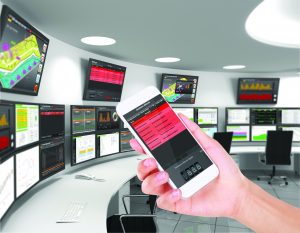About HMIs
Human Machine Interfaces (HMIs) have transformed the face of control systems over the last two decades and are now almost ubiquitous across many sectors of industry. Prior to their introduction, a bespoke control panel had to be built for every application, including pushbuttons, dials, indicator lamps and other manual controls.
introduction, a bespoke control panel had to be built for every application, including pushbuttons, dials, indicator lamps and other manual controls.
Now all of this is replaced with a single touchscreen HMI upon which vast amounts of data and information can be visualised. While some HMIs are configured to provide only visualisation, others can be used to adjust machine and parameter settings, to analyse data and produce higher level information, compile reports and manage alarms.
Also referred to as user interfaces, operator panels, control terminals and graphic displays , HMIs monitor the sensors, actuators, controllers and machines of an industrial plant and display this information in a number of forms including data logs, pie charts and plant schematics. This allows users to see every aspect of production and instantly view information in an appropriate format.
Many HMIs are touchscreen operated, although separate controls are preferred in some cases. A network of HMIs can be distributed around a plant and its control room to provide multiple points of access for operators. In such cases password protection ensures that individual people have access only to appropriate information.
They communicate with other HMIs and nodes on the control network so that a complete picture of the plant’s operation is compiled and constantly updated. All readings are time-stamped and logged into an archive to provide historical data for analysis, process optimisation, traceability etc.
HMI hardware can vary from small and simple digital LED read outs, to large screens capable of supporting high definition graphics, videos, and of processing data in real time to produce easily understood information from raw data inputs.
